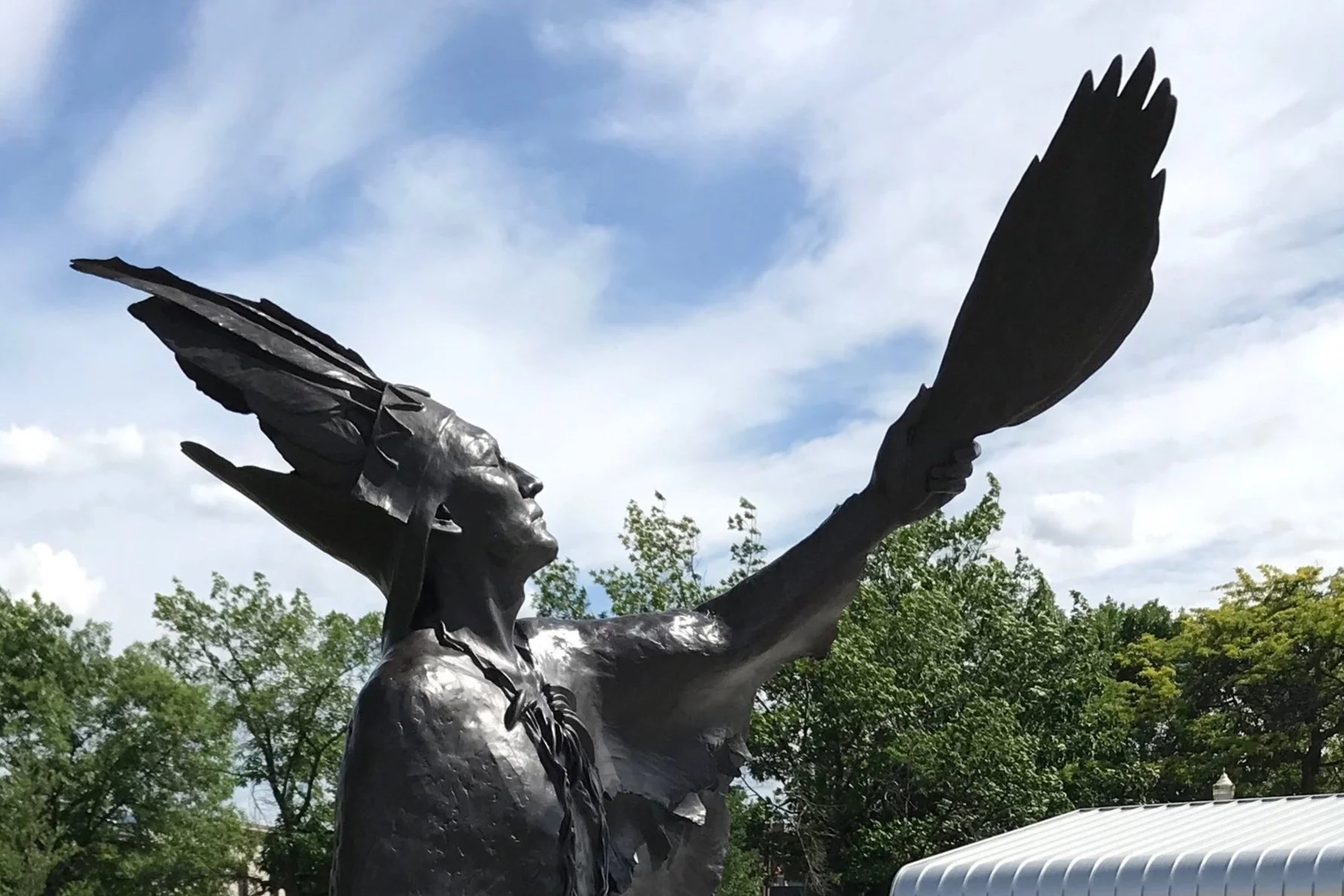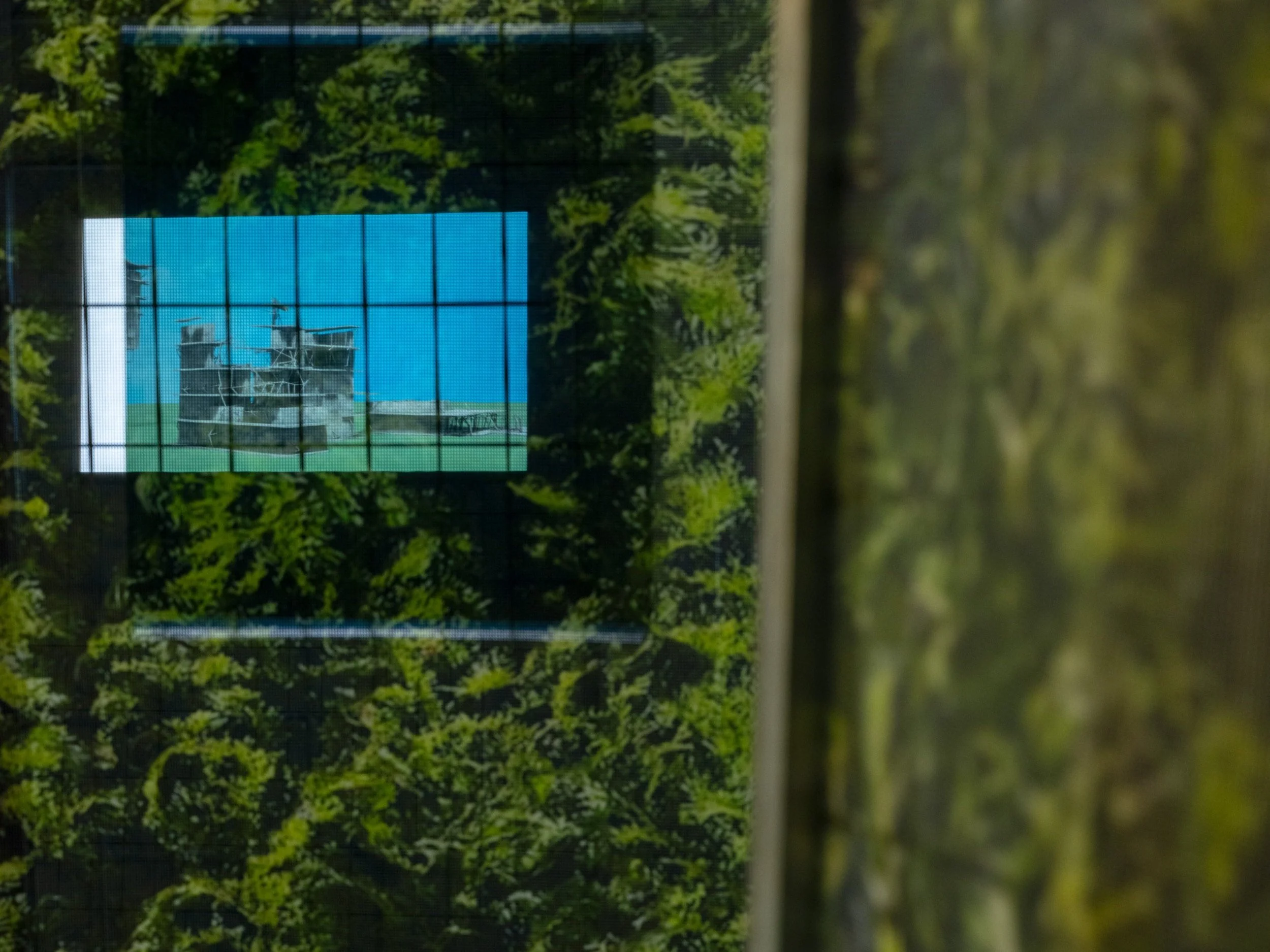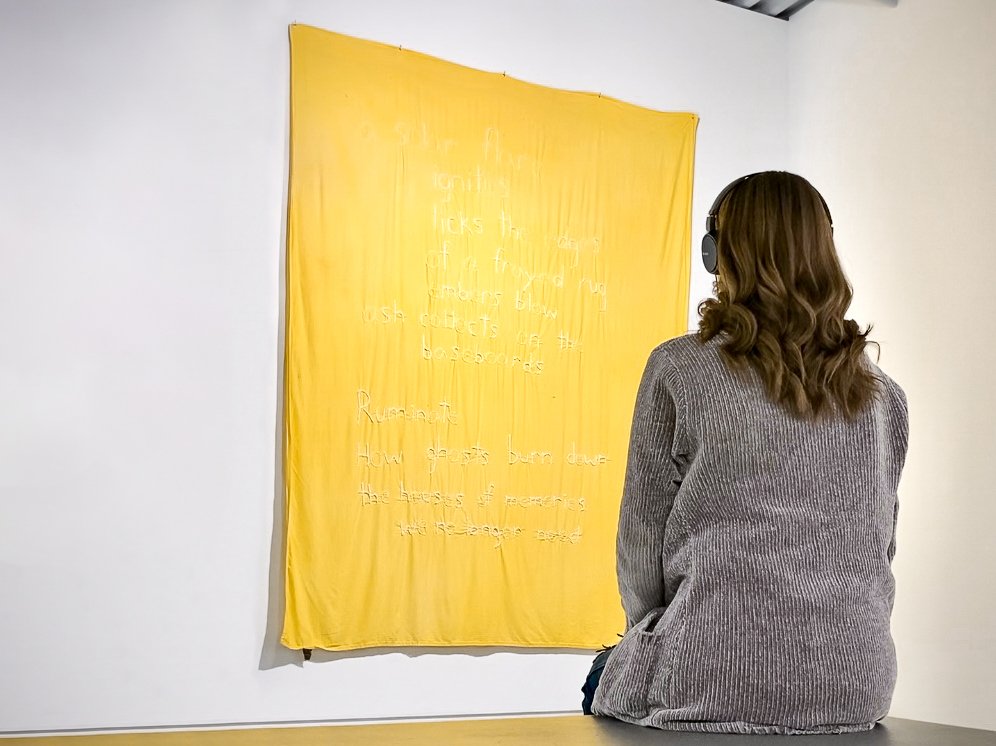Kelly Terbasket has crafted a new interpretive essay on the Similkameen Artist Residency’s current exhibition The Guest Book. Kelly reflects on her mixed heritages—syilx and settler—and how “code-switching” became a mode of survival for her. At the Similkameen Artist Residency, she leaned into her art to bring her to a place of authenticity, unburdened by the “colonial need for perfection, exhibiting, [and] commodifying.”
Read MoreAn interpretive essay on Tara Nicholson’s exhibition, Mammoths, EcoZombies and Permafrost Extinction written by Caolan Leander
In Tara Nicholson’s Mammoths, EcoZombies, and Permafrost Extinction, the Arctic is seen through large-scale photographs that reveal the North in a state of crisis. Trading the frozen vistas of icebergs for intimate photographs of animal parts, riverbanks, and ice cores, her images invoke an existential uncanniness that destabilizes the viewer as we witness multiple absences through the temporary presence of decay, erosion, and thawing ice.
Read MoreAs part of a new series of essays taking inspiration from the Alternator archive, Michaela Bridgemohan considers Crystal Przybille’s practice, and the connections between two of Przybille’s recent public art commissions: The Father Pandosy Mission 150th Anniversary Commemorative Sculpture (2012) and The Chief Sʷknc̓ut Monument (2019).
Read MoreThree Way Mirror is the collaboration of three queer artists from across Canada born in the 1970s – Daniel Barrow, Glenn Gear and Paige Gratland – who first connected in 2018 over a shared commitment to craft and ways of making like hand-drawn animation, sewing, weaving, leatherwork, beading, and paper dolls.
Read MoreAs part of a new series of essays taking inspiration from the Alternator archive, Lucas Glenn interviews prominent syilx artist Sheldon Pierre Louis to discuss his practice, and what it means to make space for syilx and Indigenous artists.
Read More'(un)resolving liminality', an interpretive essay on Jordan Hill’s exhibition, The Missing Distance, written by Aly K. Benson.
In an evergrowing world, with each passing chance for advances to take over, we as a people expand our abilities, and our minds have no option but to choose a narrowed lane of focus. To better state, yet paradoxically: as the world gets bigger, it gets smaller.
Read MoreAs part of a new series of essays taking inspiration from the Alternator archive, Erin Scott explores the ever-evolving community-based arts practice of Mariel Belanger.
Read MoreAs part of a new series of essays taking inspiration from the Alternator archive and activities, Andrea Routley considers Community Partnerships, and the value of creating a welcoming space.
Read MoreAs part of a new series of essays taking inspiration from the Alternator archive, Lucas Glenn connects with Andreas Rutkauskas to explore the representation of the climate in creative practice.
Read MoreAs part of a new series of essays taking inspiration from the Alternator archive, Erin Stodola explores the work of Julie Oakes, founding member of the Okanagan Artists Alternative Association, the society that runs the Alternator Centre for Contemporary Art.
Read More“Maybe we should stop trying to understand the world and instead trust the wisdom of algorithms”
(Megan O’Gieblyn, 2024, pg. 100)
CGish amalgamates the digital with the analog, using custom generative algorithms to splice together objects into perplexing, yet believable, forms. Heather Savard, writes on the state of AI and the future of art.
Read MoreMichaela brings her own diasporic Afro-Carribean heritage forward with such sincerity. The scents in the salves of hair picks also pull from the landscapes of Kelowna. Patchouli, fir, and charcoal mix with black pepper, allspice, and shea butter. Scent mimics self as an olfactory Blackness is brought into this space.
Read MoreWho gets to gaze upon whom, for what, for how long, and under which conditions? Can I look at your face as long as I desire? Can I see your wet mouth parting and closing and parting and closing? Can I watch your children fly above your private trampoline? Can I stare? I don’t know you and you don’t know me - what gaze is safe?
Read MoreDissonance in music is nothing new. No one cares. It's not a question of “right or wrong”. It's just a single aspect of a greater whole. Like silence. When exploited properly it serves to enhance the other components of the composition. If it works, it's valid.
Read MoreNatasha Harvey’s exhibit of five works expresses the desire and sorrow of her lifelong relationship with the unceded land of the Syilx Okanagan territory. A mixture of acrylic painting, spray paint, collage of found building materials, linocut print, drawing, and photography, her layered, complex, airy canvases create a ghostly landscape of lost forests, half-built wooden houses, patchy snow, torn fences, and oversized undergrowth.
Rather than romanticising houses in the woods, these works draw attention to the vulgarity of wooden houses built over the scraps of a razed forest. Rather than hiding the process of clear-cutting, excavation, and construction, Harvey’s compositions seem to peel the skin from the body of built suburbia, showing the violence of ongoing colonial land capture.
Read MoreThe Devil came to me in the form of a tomcat. He was big and orange, short-haired, proud chest, smiling mouth. He had lovely pink satin ribbons tied round his throat, ankles, and the tip of his tail. I’d opened the door for my gray tabby, Misty, and in he came behind her.
Read MoreBut what did you come here for?
I’m often asked.
Les Îles-de-la-Madeleine…
You mean?
Well, it must be for the nature; the remoteness, the space, the experience, the beauty.
Read MoreOn December 3rd, 2022, Katherine Pickering met with M.E. Sparks over Zoom to discuss her exhibition of new work at the Alternator Center for Contemporary Art. This is an excerpt of that conversation.
Read MoreI swear I saw something. It was right there, in front me. Nothing scary, nothing bizarre, I think. More like a form, something that has a presence, a form. It was tall. Not that tall. A bit shorter than that maybe. It was right there. I say a form but that might be misleading.
Read MoreWhat is time, and how do we experience it? Recent and ongoing events have made us all aware that
time is as fragile as it is precious. If the order of time were to collapse, for whom would it matter?
Read More



















